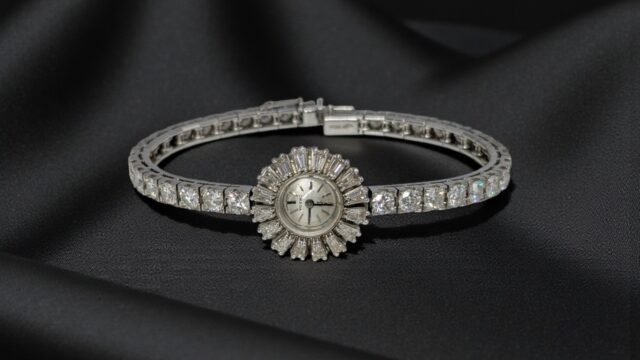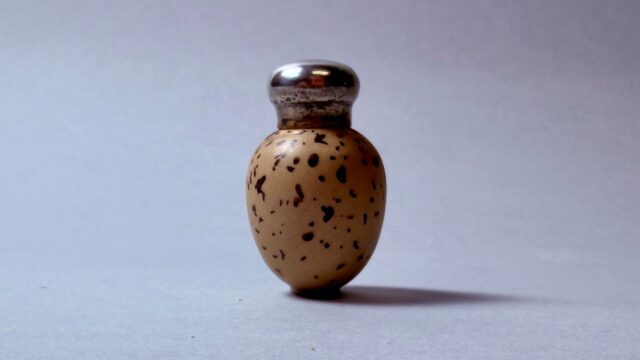Fishing Equipment by Hardy Brothers of Alnwick
For the auction of the 14th January, we are delighted to have caught a whopping collection of fishing reels and rods with many made by the most famous name in fishing - Hardy Brothers of Alnwick.

Below our sporting valuer and cataloguer Ben Rogers Jones discusses this most famous name in fishing.
A Brief History of Hardy Brothers by Ben Rogers Jones
In 1872, a young man called William Hardy set up shop as a gunsmith in Alnwick, Northumberland, England and that might very well have been the end of the story had not the great engineering magnate Lord Armstrong persuaded him to take his brother John James into partnership. The Hardy brothers advertised themselves as ‘gunsmiths, whitesmiths and cutlers', although the guns they sold were actually made in Birmingham.
By 1874 the company were advertising 'Superior River and Sea Fishing tackle' and by 1882 the brothers were prosperous enough for William to marry Barbara Mary Leighton, the daughter of the head gamekeeper of a local estate. Barbara's father Robert was a very experienced angler and one of his legacies was a list of flies that appeared in the Hardy catalogues for many years.

The Reel World
Initially the brothers bought in most of the tackle they sold, their reels, for example, coming from Malloch. However, as the firm expanded, Hardys found themselves with a reputation for superior quality tackle to defend and realised that they could hardly continue to depend on products made by competitors, so in 1891, after three years of patient development, they launched a reel which became their most famous product, The Perfect. It was an instant success and the firm has built it, with occasional interruptions, right up to the present day, a feat that no other tackle manufacturer can even begin to challenge.
Other reels made by Hardy include the Fortuna (1921-1966) which was an "in" joke, given that it was for tuna; the Cascapedia, the original of which was sold from 1932-1939; the Alma, a multiplier made from 1925 to 1937; the Zane Grey multiplier, which sold from 1928 to 1957 (and is amongst the most collectible of all Hardy reels now); and the impressive Jock Scott multiplier, which was on the shelves from 1938 to 1952; but there were many others, such as the Uniqua and the St George. which is represented in the collection. Also on offer is its cousin reel the St Andrew, as well as the popular Exalta, the Zenith and the splendid 1st edition 'Golden Prince'.
It wasn't long before Hardy's products had gained worldwide fame for such reels and royal warrants were rained upon them, the company having held at least ten in its time.

Perfection in Rods
Even for the non-fishing person, Hardy Brothers' rods are a thing of beauty. The workmanship and precision is of Swiss watch standard. The brand of 'Palakona' rods the legendary brand in the history of fishing. There are six Palakona rods in this collection which are 'split cane'.
A split cane fly rod or bamboo fly fishing rod is formed by splitting, planing and straightening a series of bamboo or cane strips before gluing them together to form a fly rod blank. This fly rod blank may be composed of any number of tapered strips, most commonly a six-strip or hexagonal design
In 1882 Hardy invented the revolutionary Palakona split-cane rod by building hexagonal-shaped or formed rods from lengths of split bamboo strip. Trade mark No 246936, they are sought after worldwide by collectors and anglers in equal numbers.
All the cane sections had to be identical and perfect, so that no matter which face of the rod was used, or onto which facet the rings were fitted, it gave a true casting action.
This system provided maximum strength, true action, and resistance to all stress and torsion. They launched the rods at the 1883-1884 Great Fisheries Exhibition in London where they were awarded a Gold Medal. So the Palakona Reg. trademark rod was born.
Fishing through the Century
For the first few decades of the firm's existence, Hardys business activities were confined to Alnwick, after the brothers had expanded into comfortable new premises in Bondgate in 1887, but a decade later they opened a shop at 61 Pall Mall in London, which was destined to become nearly as famous an address as their Northumberland factory. Forster Hardy moved down south to manage the shop and stayed for over twenty years, finally resigning in early 1920, by which time Hardys had become a worldwide business and a major (if not the major) force in the tackle industry. By1900, Hardy had warehouses in Edinburgh and Manchester in addition to their premises in Alnwick and London, and as export orders increased the firm found it necessary to appoint agents abroad, so that by the late twenties they had built up a network that stretched from Brussels to China and Australia.
The last member of the family to enter the firm was James Leighton Hardy, who followed the usual path of serving an engineering apprenticeship, before being appointed works manager in 1954, works director in 1959 and finally marketing director. Jim Hardy was instrumental in catapulting Hardys into the modern era when he set up Fibatube, the plant which made the firm's glass fibre and carbon rods. When Jim retired, the firm found itself without a Hardy at the helm for the first time in 120 years.
The Catch
The Hardy Brother's commitment to quality was the catch at the end. Extraordinarily the firm was still having all its salmon flies tied in the hand at the Bondgate factory in the 1960s, at a time when nobody did that kind of thing anymore and the vast majority of other firms were having their flies tied in India or Africa. By then, the writing was well and truly on the wall for the Bondgate building, which, state-of-the-art though it might have been 80 years previously, had become cramped and unsuitable, not to mention a serious fire hazard, thanks to decades of glue, varnish and oil soaking into the woodwork. A new factory was planned, but before the transition could be made, the firm ran into a serious cash flow problem, caught in the vice of the far eastern tackle trade expansion.
In 1967, Hardy's was bought out by the Harris and Sheldon group, only to be pitched almost immediately into the harsh market conditions of the seventies and then the catastrophic recession of the early eighties. The firm was renamed House of Hardy Limited in 1985, which was followed by a further name change in 2004 to Hardy and Greys Ltd.
For more information about this super one owner fishing collection or to arrange a private view at the Cardiff saleroom, please contact Ben Rogers Jones at brj@rjauctions.co.uk or telephone 07760261023








